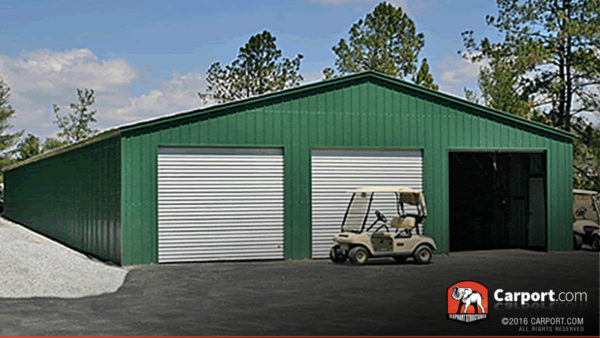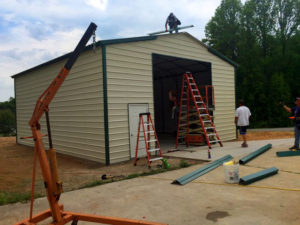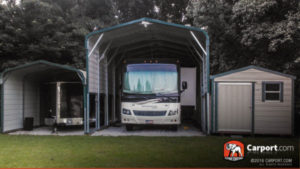
How to choose the ideal carport or garage without any headaches or the classic runaround
Perhaps the most challenging part of buying a new carport or garage is deciding which size will best fit your needs. Through our customizeable online builder, you can start from scratch and design a personalized building that accommodates your unique storage dilemmas. Here, you scan select the exact dimensions of your new building before selecting more advanced amenities, such as paneling, doors and even windows if you select the garage option. Before you can move onto more advanced stages of designing, you will need to pick the correct sizing. This step cannot be overemphasized. Wasted space is one of the greatest mistakes we can make in modern engineering, resulting in exorbitant pricing and endless headaches. While the adage “room to grow” is true for most growing businesses and families, too much space or an exaggerated building plan can render your property the neighborhood eyesore. Recently, we had a customer message us wanting a building that could adequately fit two SUVs, a four-wheeler and a golf cart. Relying on more than three decades of industry know-how, we succinctly recommended a 20′-x-30′ garage to accommodate her diverse and rather cumbersome storage load. That’s what makes the design process at carport.com so unique and trusted. We will never recommend a building that exceeds your needs. Like in any industry, we rely on repeat clientele, so we want to make sure you are satisfied with your storage option.
Carport or garage?

This is a tough one. Many customers spend countless hours wrestling over this selection. While a carport is the more economical option, we can not overstate the steel advantages of a customized garage, which offers superior protection inside out. Garages offer a complete enclosure that can not only protect your car or SUV, but also your family’s recreational vehicles, boats and whatever tools or equipment you might have. Partitioned walls can also be easily retrofitted once the structure is built, so you could even design a separate workshop to complement your garage bays. In terms of climate and temperature control, garages are the best storage option in offering superior protection. That’s not to say that carports aren’t up to the task of protecting your car or truck from harmful UV rays. By installing quarter panels on the side of your carport, you can keep damaging sunlight and heat from warping and cracking your cars leather interior and vinyl dashboard.
Vertical vs horizontal paneling in carport kits or steel metal garages
Deciding which type of siding to outfit your garage or carport will be one of the toughest decisions you will make during the online purchasing experience. Vertical siding is the more durable option as it is able to optimize steel protection by utilizing hat channeling or internal brackets, which offer superior support. Made from galvanized steel, these internal bracketing components allow for reinforced protection. Hat channel protection and vertical wall paneling is great for areas that are prone to gusty winds and heavy snows.
How to select the perfect roof

Now that you’ve decided on the style of paneling for your carport or garage, you will need to pick a roof for your endearing carport or garage.
While our regular style roofing is more than up to the task or protecting your valuables, vertical style roofing should be considered for larger buildings that require more bracing and support. A vertical style roof allows for the applied load and weight to be equally dispersed. It’s important to note, however, that all roof designs in our inventory and catalog meet building codes and standards. Vertical roof styles are laid in vertical orientation that run from the peaks to the sides.
So, what makes vertical roofing and paneling stronger? For one, vertical roofing also allows for the placement of hat channeling to add extra bracing. Hat channels are also known to be stronger than wooden trusses. And don’t get us started on the inferiority of wooden buildings when compared to their wooden rivals. We also offer certification. Certified buildings are always stronger and are made to withstand snow loads and wind speeds of 130 mph and snow loads of 30 psf.



